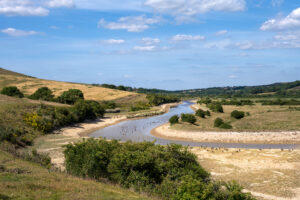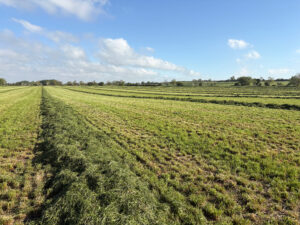In the UK, climate change means we’re experiencing uneven weather patterns, with hotter, drier summers, as well as periods where we have very heavy rainfall in a short period of time which causes flooding.
With the very real possibility of severe water shortages in parts of the UK happening in the next two or three decades, it is imperative that we come up with solutions, and reservoirs are an obvious solution to our growing water shortages. So, we thought it would be interesting – and timely – to look at the process of how reservoirs are created and why they take so long to build.
What is a reservoir?
A reservoir is a manmade lake that is designed to capture and store water, either through rainfall or diverting a natural watercourse. Reservoirs are also used as a way of controlling floodwater. Reservoirs collect water during the wet season so there is enough water available to provide water for drinking and agricultural irrigation. Some of the largest reservoirs and highest dams are also used to generate hydroelectric power.
How to build a reservoir
Building a reservoir is a massive undertaking. It requires a huge expanse of land which needs to be excavated to accommodate the volume of water needed. The infrastructure also needs the installation of a system of aquifers and tunnels to transport the potable water to where it is needed. Reservoirs are built on higher ground which means gravity will play its part in moving the water downstream, but pumping stations will also be needed to aid with the distribution process.
The initial stage of reservoir construction is to build the dam. Firstly, the rivers and streams that will feed the reservoir need to be diverted in order to give engineers a dry construction area. However, this isn’t possible when it comes to dams being built on major rivers – in these cases, dry sections that cover half of the area are created at different times, allowing the river water to continue flowing at the same time as construction takes place.
Once the dam’s foundations are in place, the concrete walls can be installed. When it has been completed, the wall will be covered by a protective layer to protect it from damage.
When the dam is in place, the rivers and streams that were originally diverted are diverted back in order to fill up the reservoir and keep it fed with water.
The Kielder Reservoir
As an example of how a reservoir is created, let’s take the Kielder Reservoir – the largest reservoir in the UK which has a 27 mile perimeter and contains around 200 billion litres of water. The planning stage of the project alone took 20 years from the initial concept, the design and getting planning permission before construction could even begin. Construction then took an additional seven years before the reservoir was opened in 1982.
The dam and the reservoir are just part of the construction. Civil engineers also had to design tunnels and pumping stations that transport the water from the reservoir to the towns and cities it serves. Firstly the water is taken via a canal to a series of aquifers and tunnels that direct the water into the next valley. The tunnels had to be strong enough for the quantity of water and ensure there is no backflow.
Forty years later, the area is still benefiting from the reservoir. The Kielder project has meant that the north east is the most water secure area in the UK, and the only area that has a consistent surplus of usable water. In addition, the water turbine attached to the dam produces enough electricity for a town of 11,000 people.
The downside of reservoirs
Unfortunately, because of the huge amounts of water needed, reservoirs do have a negative impact on the environment. Altering natural water courses has a devastating effect on wildlife and the environment. Diverting free flowing water into a reservoir also means the sediment that would normally be taken downstream and end up in the sea will be deposited in the reservoir, causing problems with silting and a consequent reduction in water capacity.
Huge tracts of land are needed to create reservoirs which means there is usually huge opposition from local people. In the past, entire communities have been relocated and their villages covered over by the water. For example, two villages disappeared underwater when the Ladybower Reservoir was completed in 1943.
So although building more reservoirs could be the answer to predicted water shortages in the UK, there are major obstacles to making it happen.
Saving water in your business
At Castle Water, we support our customers to become more water-efficient and sustainable by providing free advice and resources. By taking the smallest of steps now, you’ll be making a big difference in the long run to avoid potential water shortages in the future. Use our free online resources to engage with your employees and encourage cultural changes that result in less water being used:
- Start with a simple review of your business’s water usage
- Follow our step-by-step guide to start saving water
- Understand how your water bill works
- Download our Achieving Behaviour Change guide to find out how to get your staff involved
If you would like to learn about our water efficiency services.
If you’d like to talk with someone about getting a better deal on your business water bills, speak to one of our advisors on webchat, or give us a call on 01250 718 700



